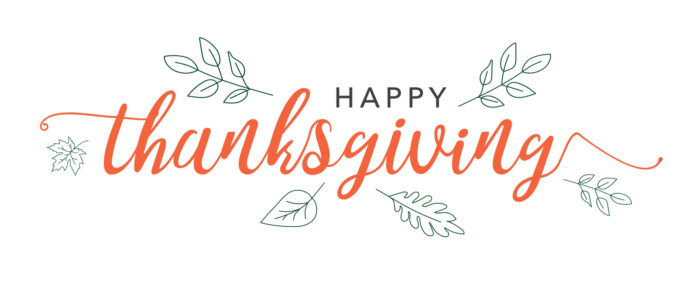Now is no time to think of what you do not have. Think of what you can do with what there is. – Ernest Hemingway
Thanksgiving is a time to celebrate life, love and luck. It is a time to be grateful for family and friends. It is a time to gather around the dinner table and realize how fortunate it is to have food on it.
Days, weeks and sometimes months go by without giving thanks for what one has, and it is understandable, given how busy everybody’s schedule is these days – especially during the season. Americans often take for granted their paychecks and possessions, their children and parents, their happiness and health. It is easy to overlook in modern-day society. But, perhaps that is what makes Thanksgiving special.
“The meaning of Thanksgiving has undergone numerous transitions – an expression of gratitude for survival, a council’s recognition of its flourishing community, submission of the local natives, the defeat over the British, resulting in a collection of our nation’s traditions and values”.
We have added our own unique meaning to the thanksgiving season as history has evolved and we needed to come together in communal and spiritual healing. Throughout history, Americans have found the need and desire to come together in a time of healing, sharing our victories and our losses. This coming together has traditionally provided a time to strengthen, to enhance our hope and to redeem our faith our fellow human beings.
The meaning of Thanksgiving also includes cherishing the young and passing down traditions held near and dear by previous generations. Through shared experiences, legacies are created, and heritages are preserved.
“The true meaning of Thanksgiving focuses upon relationship,” the article states. “In gratitude, we humbly reflect upon all the gifts (family, friends, health) that saturate our lives. By “giving-thanks” we choose to extend ourselves and give to others less fortunate. Out of the abundance of our hearts, we are able to offer our resources to help others.”
The history of the holiday – as most Americans will remember from elementary school – dates back to 1620, when the Mayflower landed at Plymouth Rock and its survivors were helped by the native inhabitants of the land. After a cold winter, the Pilgrims and the Indians reaped a bountiful harvest and feasted for days.
“Now remembered as American’s “first Thanksgiving” – although the Pilgrims themselves may not have used the term at the time – the festival lasted for three days,” according to the History channel’s Web site. “While no record exists of the historic banquet’s exact menu, the Pilgrim chronicler Edward Winslow wrote in his journal that Governor Bradford sent four men on a “fowling” mission in preparation for the event, and that the Wampanoag guests arrived bearing five deer.”
While turkey may have been a part of the meal, it was not the main dish; instead, it was venison. Pumpkin pie and other autumnal desserts were probably not a part of the Pilgrim feast since the Mayflower’s sugar supply was so low that there was not enough of it to make sweets.
“Historians have suggested that many of the dishes were likely prepared using traditional Native American spices and cooking methods,” the Web site states.
The holiday became official in 1789, when George Washington proclaimed it. In 1863, Abraham Lincoln designated the last Thursday of November as the day to celebrate it. And in 1941, Congress passed a bill sanctioning it, which Franklin Roosevelt signed. Ever since, Americans have enjoyed the parades, the football games, and the television shows that surround the beloved bird – whether baked, roasted or deep-fried – and all the tasty trimmings.
“A lot of families will say a short prayer before the meal, or drink a couple of toasts after,” according to the Web site VisiHow. “If you want to shift some attention to the meaning of Thanksgiving, there are some activities you can initiate for people who are with you on that day.”
Among those activities are doing good deeds for those less fortunate, such as feeding the hungry, helping the homeless, donating to a food pantry or visiting homebound seniors.
“Although these activities can sometimes be a little difficult to start when people are caught up in chatting or preparing food, they are worth the trouble because your celebration will be richer and more memorable,” VisiHow states.
Think about making Thanksgiving more than just a social gathering. It is a tradition handed down through generations; one that has often been celebrated in the face of great adversity and sacrifice. When reminded of all that this holiday means, be thankful for what we have; reach out a helping hand to others; and give others reason to be thankful in this holiday season.
Share This



